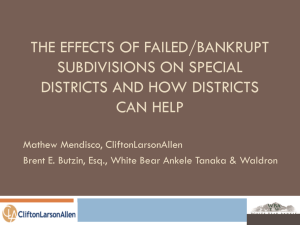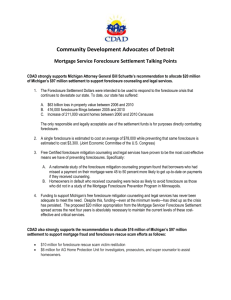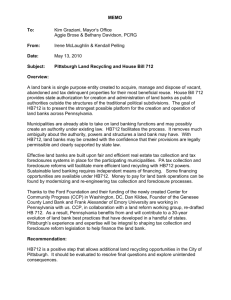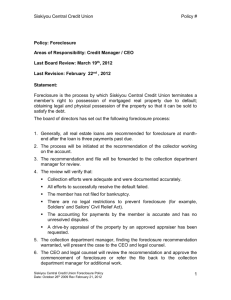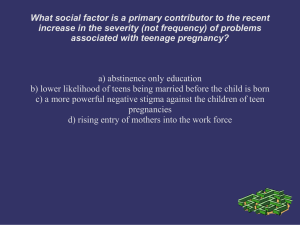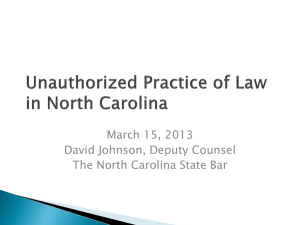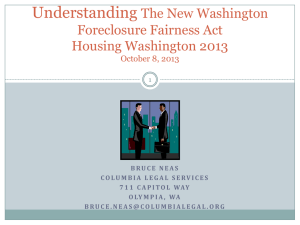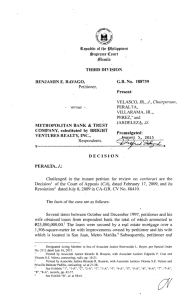Toward a Unified Theory of Exclusionary Vertical Restraints
advertisement
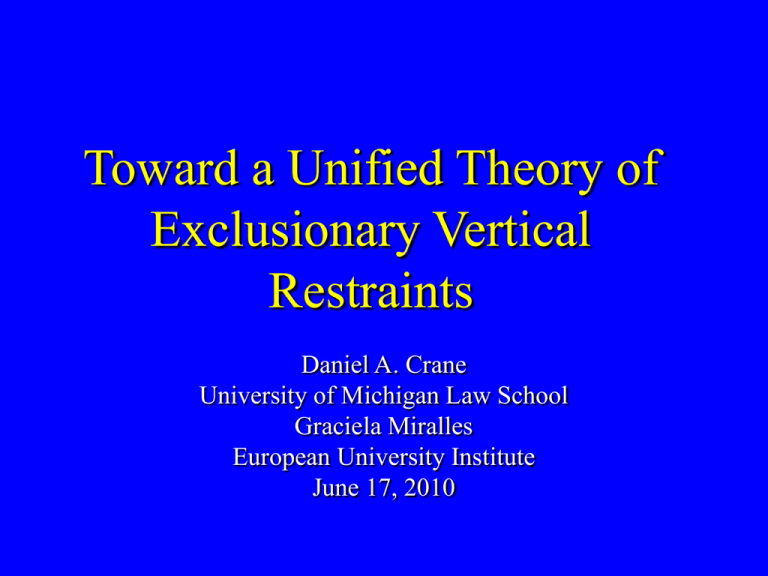
Toward a Unified Theory of Exclusionary Vertical Restraints Daniel A. Crane University of Michigan Law School Graciela Miralles European University Institute June 17, 2010 Variety of exclusionary vertical practices • • • • Exclusive dealing Tying Predatory pricing Bundling • Bundled discounts • Market share discounts • Loyalty rebates Our project: Both broad and narrow • Broad: Comprehensive framework for addressing all exclusionary vertical restraints • Narrow: Just exclusionary vertical restraints. – Not addressing collusion or exploitation Collusion: Agreeing with your competitor to stop competing in order to secure a mutually beneficial outcome, at the expense of someone else. Austria vs. Germany 1982 Group Stage Exploitation: Taking advantage of someone else's weakness to extract an excessive amount of surplus. World Cup Qualifying 2001 Australia 31, American Samoa 0 Exclusion: Disabling one's competitor from competing by anticompetitive means. Oh dear. Exclusion, collusion, and exploitation • Different legal tests. • Plaintiff must identify which theory it is pursuing. Both US and EU law lack a consistent framework • Three sources of confusion: – Price vs. non-price – Single product vs. multi-product – Primary line vs. secondary line US Example • Primary line price discrimination = predatory pricing. • Secondary price discrimination requires no market power, no injury to competitive process, not even threat to competitor's continuation in market. US Example • Bundled discounting: – LePage's: don't analogize to predatory pricing; analogize to tying and exclusive dealing. – PeaceHealth: analogize to predatory pricing, using discount reallocation test. EU Example • Delimitis: Exclusive dealing agreement under Article 101 analyzed under a substantial foreclosure framework. • Michelin II: Loyalty rebates analyzed under Article 102 form-based approach without regard to amount of foreclosure or general effects on the market. Comprehensive two-part test, regardless of form of restraint • Foreclosure • Substantial Foreclosure • “[V]irtually every contract to buy ‘forecloses’ or ‘excludes’ alternative sellers from some portion of the market, namely the portion consisting of what was bought.” -Judge (now Justice) Stephen Breyer, Barry Wright v. ITT Grinnell (1983). • Too broad; foreclosure becomes a useless category. Our test • A restraint "forecloses" if it denies equally efficient rivals a reasonable sales opportunity. • Different applications depending on kind of restraint, but all answering same ultimate question. Example: Exclusive dealing • Exclusive dealing may not foreclose if rival could reasonably offer its own competitive exclusive dealing contract. But, may foreclose if (for example): – New entrant facing preexisting long-term exclusives – Exclusive is for too large a piece of business for small rival to bid. – Dominant firm is "must carry" brand. Example: Predatory pricing and bundled discounts • Below-cost pricing forecloses (but may not be substantial) • An above-cost bundled discount may foreclose if the rival could not offer its own above-cost competitive discount in the competitive market. – Discount reallocation test determines whether or not there is foreclosure. Example: Secondary line price discrimination • Must disadvantaged retailer sell below cost in order to remain competitive with advantaged retailer? – If not, no foreclosure. Substantial • Legal test: Does amount of foreclosure deny rival a reasonable opportunity to survive in the market? • Economic test: Is rival reasonably able to reach and maintain minimum viable scale by competing for business in the nonforeclosed segment of the market? Minimum viable scale • Total sales new entrant needs to achieve hurdle rate on invested capital. (Salop, 1986) • Familiar concept from horizontal merger analysis. The tricky part: Incumbency advantage • Even in non-foreclosed segment, incumbent/dominant firm may have decided advantage: – Customer loyalty – Switching costs – Brand preference Effect of incumbency advantage on "substantiality" • • • • 50% market foreclosure 20% minimum viable scale 70% incumbency advantage. New entrant's initial share is 15%, < mvs But, legal test must look past first round • Incumbency advantages can degenerate quickly. • Even in a completely non-foreclosed market, new entrant often must absorb losses for years to reach mvs. Illustration • Static market with 2,000 units purchased monthly • 50% foreclosure • 90% incumbency advantage • Minimum viable scale: 20% (400 units) Market Share Change with 90% Incumbency Advantage and Monthly Customer Decision 1000 Units 800 600 400 200 0 1 3 5 7 9 11 13 Month 15 17 19 21 23 Implication: • As a general rule, foreclosure should not be deemed substantial if the minimum viable scale is less than the units or revenues in the non-foreclosed segment of the market divided by the number of competitors. • In a two-firm market, foreclosure is never substantial if mvs < 50% of non-foreclosed segment. Qualifications • New entrant often claims superior price or technology, hence should more than overcome any incumbency advantage. • If there are very long intervals in the competitive cycle, then incumbency advantage may erode slowly. But then market may be a natural monopoly. • Markets with partial foreclosure and many competing firms raise special questions: – Aggregate foreclosure? – Generic probability of success falls with multiple competitors. – Exclusion of any one competitor may have little competitive significance. Concluding Thoughts • Unified test adds rigor and consistency, but does not eliminate all difficulties. • Opportune time to pursue unified test on both continents: – "Antitrust policy toward vertical restraints is the biggest substantive issue facing antitrust.” Richard Posner, 2005. – EU: shift toward effects-based rules. Toward a Unified Theory of Exclusionary Vertical Restraints Daniel A. Crane University of Michigan Law School Graciela Miralles European University Institute June 17, 2010
